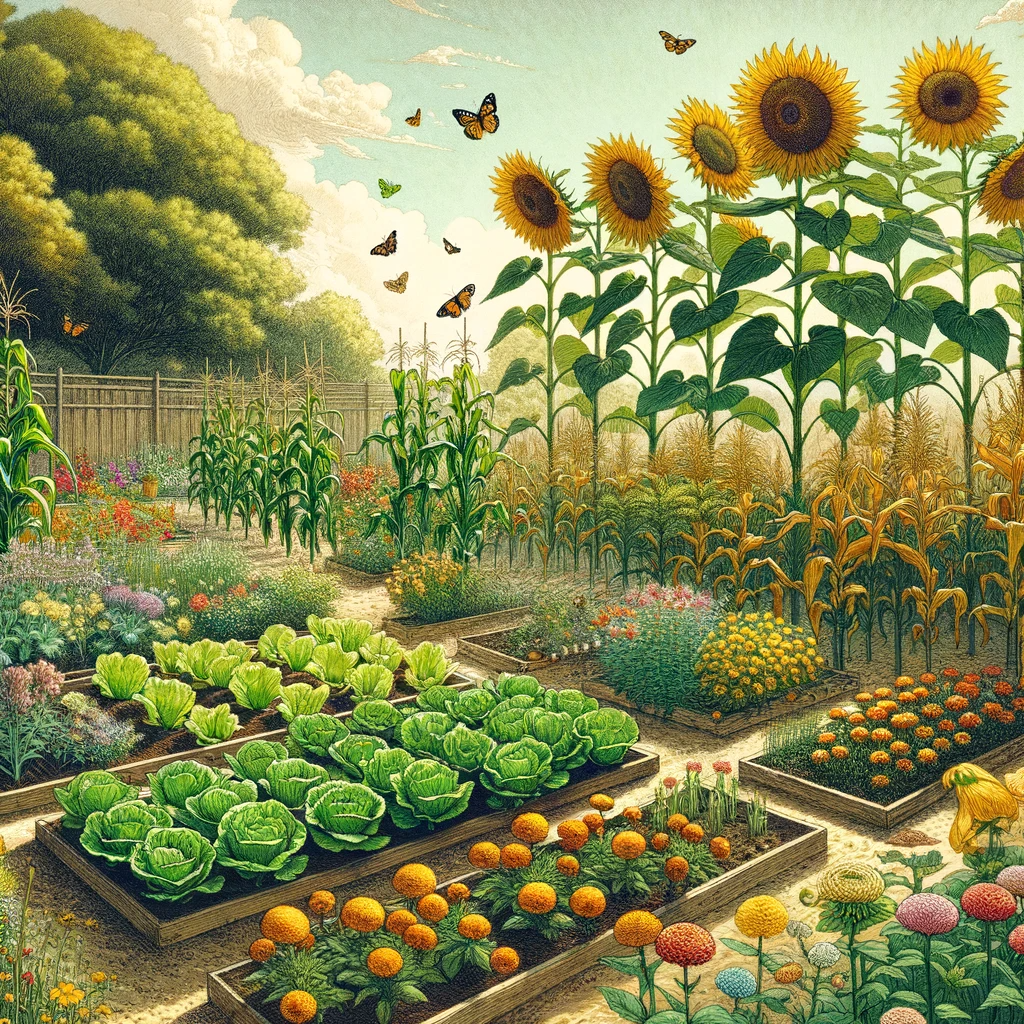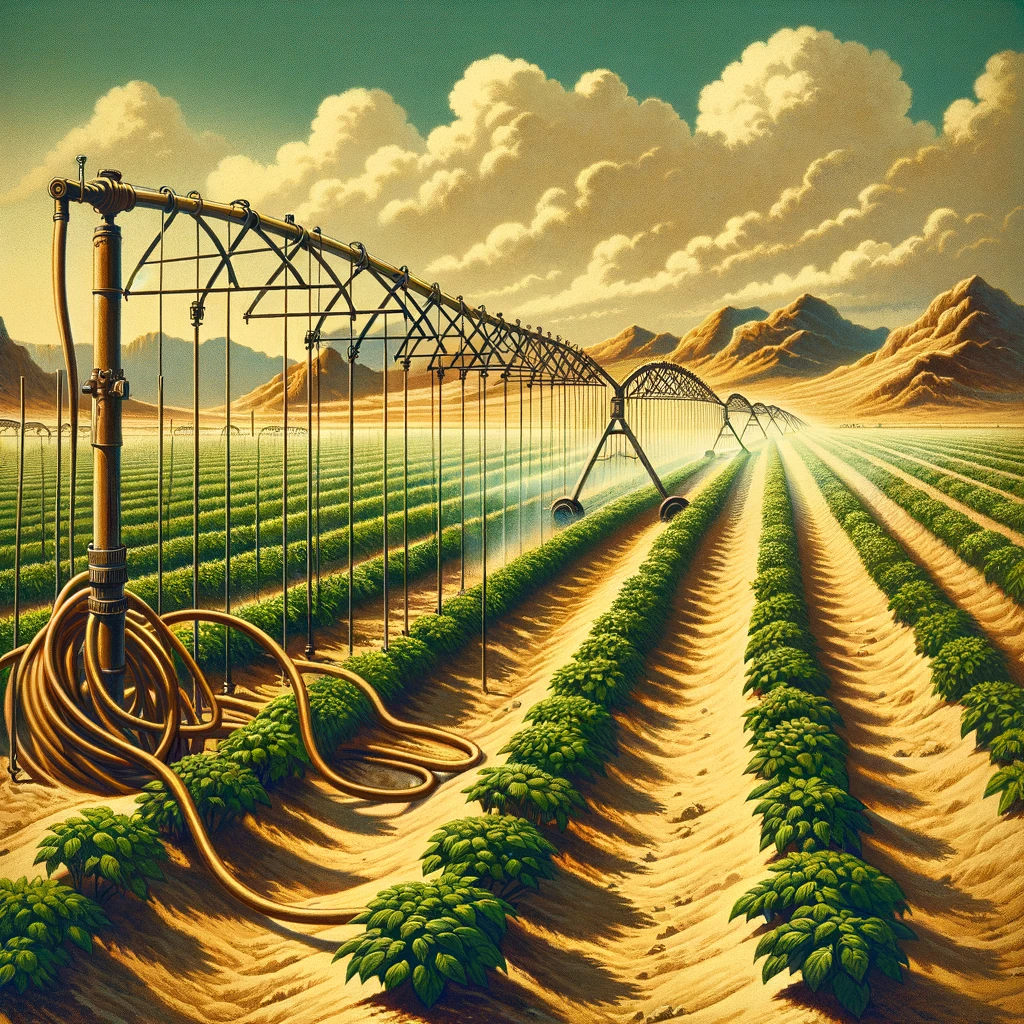
Welcome to our Gardening Techniques section! Here, we dive deep into the art and science of advanced gardening. Whether you’re a seasoned green thumb or a budding gardener, you’ll find something to enrich your gardening journey. Let’s cultivate not just a garden, but a thriving ecosystem!
Advanced Planting Methods
Succession Planting
- Maximize Harvest: “Plan your planting for a garden that never rests.” Learn to stagger planting for continuous harvests.
- Crop Rotation: “Keep your soil as healthy as your plants.” Understand the importance of rotating crops for soil health and pest control.
Companion Planting

- Natural Partners: “Some plants just belong together.” Find out which plant combinations work best.
- Pest Control and Pollination: Attract pollinators and keep pests at bay, naturally.
Soil and Fertilization Techniques

Soil Enrichment
- Organic Matter: “Feed your soil, feed your soul.” Tips on using organic matter to boost fertility.
- pH and Nutrients: Balance your soil’s pH for happier, healthier plants.
Fertilization Strategies
- Organic vs. Synthetic: Weigh the pros and cons of different fertilizers.
- Application Methods: “Fertilize wisely.” Learn the best practices for feeding your garden.
| Aspect | Organic Fertilizers | Synthetic Fertilizers |
|---|---|---|
| Environmental Impact | – Eco-friendly, less pollution. – Improves soil structure and biodiversity over time. | – Can cause soil and water pollution. – Often leads to nutrient runoff. |
| Nutrient Release | – Slow, steady nutrient release, promoting healthy growth. – Less risk of over-fertilization. | – Fast nutrient release, which can sometimes harm plants. – Higher risk of over-fertilization and nutrient leaching. |
| Long-Term Soil Health | – Enhances soil fertility over time. – Supports microorganisms and earthworms in soil. | – Can degrade soil structure and health over time. – Does not support soil microorganisms. |
| Cost | – May be more expensive initially but cost-effective in the long run. | – Generally cheaper but may require more frequent application. |
| Ease of Use | – Application rate is less critical, more forgiving. – Requires a better understanding of soil health. | – Requires precise measurement and timing for effectiveness. – Easier for short-term use. |
| Nutrient Composition | – Provides a wide range of nutrients, though in varying amounts. | – Specific, consistent nutrient composition. |
| Effectiveness | – May take longer to see results, but benefits are lasting. | – Quick results, but effects are often short-lived. |
Pruning and Training Plants

Pruning Basics
- When and How to Prune: “Prune for health, prune for beauty.” Guidelines for effective pruning. Check out this video!
- Shaping and Health: Techniques to keep your plants in top shape.
Plant Training
- Espalier and Trellising: “Turn your plants into living art.” Discover artistic training methods.
- Vertical Gardening: Make the most of your space with vertical growth strategies.
Water Management

Efficient Watering Techniques
- Drip Irrigation: Conserve water while keeping your plants quenched.
- Mulching for Moisture: “Mulch: A gardener’s best friend.” Learn the benefits of mulching.
Rain Gardens and Water Features
- Creating a Rain Garden: “Harvest the rain.” Steps to build a rain garden.
- Water Features: Beautify your garden while supporting its ecosystem.
Sustainable Gardening Practices
“The ultimate goal of farming is not the growing of crops, but the cultivation and perfection of human beings.” – Masanobu Fukuoka
- Eco-Friendly Pest Management: Adopt nature-friendly pest control techniques.
- Composting and Green Waste: Turn your waste into garden gold with composting.
Here is a list of best composting practices:
Composting Best Practices
- Balance Green and Brown Materials:
- Green materials (e.g., kitchen scraps, grass clippings) provide nitrogen.
- Brown materials (e.g., dry leaves, straw, wood chips) offer carbon.
- Aim for a balance of 1 part green to 2-3 parts brown.
- Cut or Shred Larger Pieces:
- Smaller pieces decompose faster.
- Chop or shred garden waste and kitchen scraps.
- Maintain Moisture:
- Compost should be moist, but not too wet.
- Aim for the dampness of a wrung-out sponge.
- Turn the Pile Regularly:
- Aerate your compost pile every week or two to speed up the process and prevent odor.
- Turning helps distribute air and moisture.
- Monitor Temperature:
- A good compost pile will heat up in the center.
- Ideal temperatures are between 135-160°F (57-71°C).
- Avoid Meat, Dairy, and Diseased Plants:
- These can attract pests and create odors.
- Diseased plants may spread pathogens.
- Use a Compost Bin or Enclosure:
- Contains the pile and helps retain heat and moisture.
- Can be a simple wire frame, wooden box, or a purchased bin.
- Layer Your Compost:
- Start with coarse material (like branches) for drainage.
- Alternate between green and brown layers.
- Consider a Compost Activator:
- Can jumpstart the process, but not necessary.
- Garden soil or finished compost can serve as an activator.
- Keep the Pile Covered:
- Reduces moisture loss and keeps rain from making the pile too wet.
- A tarp or plywood can work.
- Compost in the Right Location:
- Place your bin in a convenient yet out-of-the-way spot.
- Ensure good drainage and some sun exposure.
- Be Patient:
- Compost takes time to mature.
- Ready when it’s dark, crumbly, and earthy-smelling.
Happy Gardening!

Leave a Reply